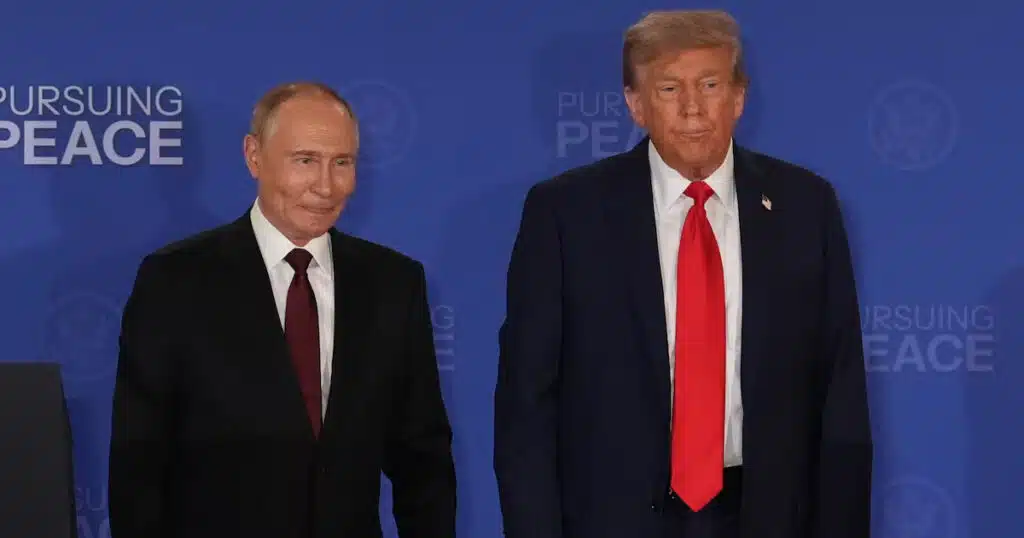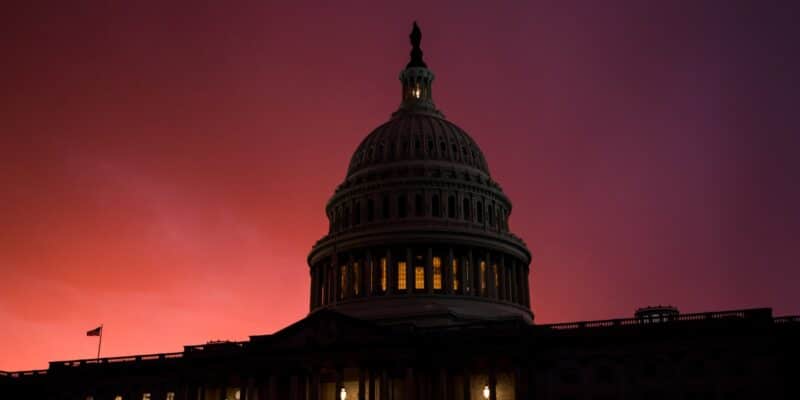
Will We Sacrifice DC and New York For Taiwan?
Last month, National Defense University professor Donald Stoker wrote a thought-provoking article for Real Clear Defense that examined China’s actions in the Korean and Vietnam Wars and concluded that it will be “exceedingly difficult to deter China in regard to Taiwan,” and that a successful American strategy of deterrence “requires strength, capability, credibility, and will.” A grand strategy of deterrence affects the mind of the enemy–in this case, the mind of Chinese President Xi Jinping and the minds of Xi’s top advisers. The United States and its allies, Stoker writes, must “produce overwhelming doubt in the minds of China’s leaders” that they can take control of Taiwan “at an acceptable cost.”
China under Mao Zedong in the early 1950s in Korea was not deterred from fighting U.S. forces there even though the United States possessed atomic weapons and China did not, and even though America had a much stronger and technologically advanced military than China did at the time. China, Stoker explains, was willing to “endure the risks of escalation, and pay enormous costs in blood and treasure” to protect what its leaders perceived as threats to their security. China also had the advantage of geographical proximity to the conflict. In short, China was willing to risk atomic attack and to expend countless lives and treasure to ensure that the northern half of the Korean peninsula was ruled by a regime friendly to China’s interests.
Stoker notes that China was much less involved in the fighting in Vietnam than in Korea, but attributes that to the U.S. decision not to invade North Vietnam. Stoker writes that Mao told Hanoi’s leaders that his armies would fight the Americans if they invaded northern territory. If Mao was serious–and we have no reason to doubt that–Chinese forces would have intervened in North Vietnam, just as they did in Korea, had American forces crossed into northern territory with the express purpose (as in Korea) of uniting the country under non-communist, pro-American rule.
In both Korea and Vietnam, China had the same political goal–to maintain a friendly regime on its southern border. America’s atomic weapons and its superior military power were insufficient to deter China from achieving its political aims. China’s political goal with regard to Taiwan is to reunify the island under communist party rule. It is the unfinished business of the Chinese Civil War. China’s leaders have been unambiguous about that goal. What will it take, Stoker asks, to deter China from achieving that political goal?
Stoker is not confident that China can be deterred regarding Taiwan. China views Taiwan as a “lost province.” Its value to China’s leaders, Stoker writes, “is exceedingly high,” higher in fact than the independence of North Korea and North Vietnam. The only object that China values more than Taiwan, Stoker writes, is “regime survival.” Which means that to deter China from taking Taiwan the United States must hold at risk the survival of Chinese Communist Party (CCP) rule on the mainland. We must convince Chinese leaders that if they attempt to conquer Taiwan, we will not only successfully defend Taiwan but will force the CCP from power in China–regime change.
One aspect of U.S.-China history that Stoker did not examine was the two Taiwan Strait crises of the 1950s. In the first crisis in 1954-55, China took control of offshore islands, shelled Quemoy and Matsu, and publicly called for the “liberation” of Formosa (Taiwan). President Eisenhower persuaded Congress to pass a resolution authorizing him to employ the armed forces to protect Taiwan–the so-called Formosa Resolution. Secretary of State John Foster Dulles warned China that the U.S. was prepared to use atomic weapons to defend Taiwan. By mid-1955, the crisis was over. Deterrence had worked.
Three years later, China again shelled Quemoy and Matsu, sent warplanes to bomb the islands, and imposed a naval blockade. Eisenhower dispatched the Seventh Fleet to the Taiwan Strait, increased the number of aircraft carriers and warplanes in the region, and let Chinese leaders know that he was prepared to use nuclear weapons to defend Taiwan. Once again, deterrence worked.
Why did deterrence work in the mid-to-late 1950s, but not in Korea and Vietnam? The answer is provided by Stoker at the end of his article: “a deterrent strategy requires strength, capability, credibility, and will.” Under President Eisenhower, the United States exuded “strength, capability, credibility, and will.” We had overwhelming nuclear dominance over China (which had no nuclear weapons then) and significant nuclear superiority over China’s Soviet ally. We also had naval predominance in the western Pacific and a huge technological edge vis-a-vis China. In Eisenhower and John Foster Dulles, we had two statesmen whose will was unquestioned.
The situation today is much different. We no longer have significant nuclear superiority over China, especially in theater nuclear weapons. We no longer have naval predominance in the western Pacific. Unlike the 1950s when we projected strategic clarity on defending Taiwan, today we continue to adhere to a policy of “strategic ambiguity” that has long since outlived its purposes. Finally, one suspects that even partisan Democrats will acknowledge that when it comes to assessing credibility and will, Joe Biden and Antony Blinken are no match for Eisenhower and Dulles, and Biden and Blinken are playing with a much weaker hand than Eisenhower and Dulles had in the 1950s.
China’s top leaders have not hidden their belief that China will replace the United States as the word’s leading power in the not so distant future. This is part of Xi’s “China Dream” that will put the final nail in the coffin of China’s century of humiliation. China, unlike in the 1950s, is a peer competitor of the United States both economically and militarily. China is modernizing the PLA Navy and its nuclear weapons force. It has also formed a “strategic partnership” with a Russia that deploys a nuclear force that is at least equal to that of the United States. President Xi exudes confidence, while an aging President Biden exudes confusion.
Perhaps a better historical analogy than the Korean or Vietnam Wars is West Berlin during the Cold War. West Berlin was an “island” of freedom surrounded by the East German state and Soviet forces. The United States and its European allies could not have defended West Berlin in the event of a Soviet conventional assault. Yet West Berlin survived. It survived because Soviet leaders believed that the United States would sacrifice Washington and New York for West Berlin. Presidents from Truman through Reagan projected strategic clarity about that, and in Reagan’s case added to that clarity by the deployment of intermediate range nuclear weapons and cruise missiles in West Germany in the 1980s in the face of massive protests in the U.S. and the West, and a significant propaganda effort on the part of the Soviets to cancel the deployment of the missiles.
China will be successfully deterred from attacking Taiwan only if it believes that U.S. leaders are willing to sacrifice Washington and New York for Taiwan. Strategic ambiguity must give way to strategic clarity. But strategic clarity must include more than words. Which brings us back to Stoker’s requirements: strength, capability, credibility, and will.
Francis P. Sempa writes on foreign policy and geopolitics. His Best Defense columns appear at the beginning of each month.
This article was originally published by RealClearDefense and made available via RealClearWire.



